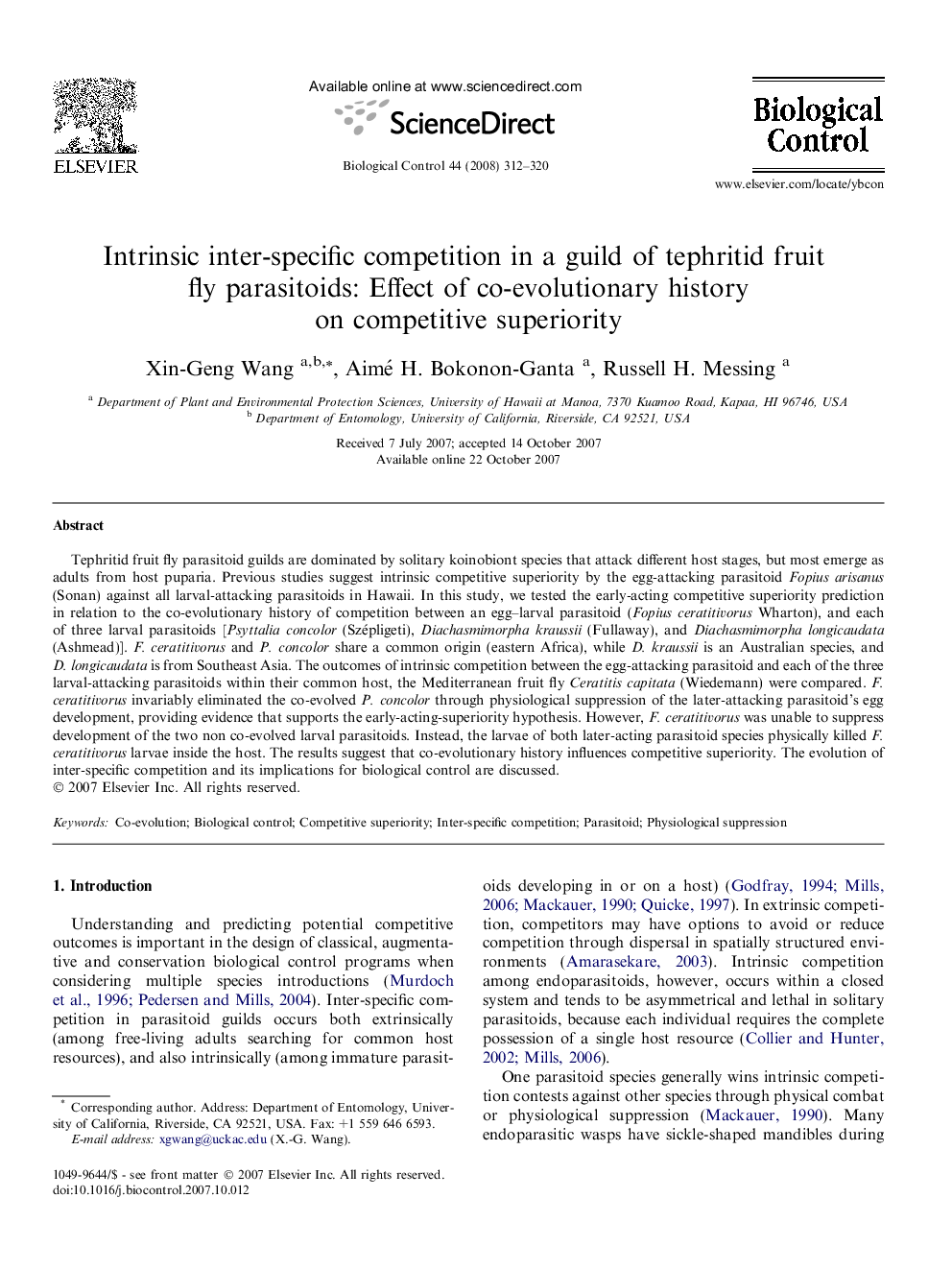| کد مقاله | کد نشریه | سال انتشار | مقاله انگلیسی | نسخه تمام متن |
|---|---|---|---|---|
| 4505048 | 1321124 | 2008 | 9 صفحه PDF | دانلود رایگان |

Tephritid fruit fly parasitoid guilds are dominated by solitary koinobiont species that attack different host stages, but most emerge as adults from host puparia. Previous studies suggest intrinsic competitive superiority by the egg-attacking parasitoid Fopius arisanus (Sonan) against all larval-attacking parasitoids in Hawaii. In this study, we tested the early-acting competitive superiority prediction in relation to the co-evolutionary history of competition between an egg–larval parasitoid (Fopius ceratitivorus Wharton), and each of three larval parasitoids [Psyttalia concolor (Szépligeti), Diachasmimorpha kraussii (Fullaway), and Diachasmimorpha longicaudata (Ashmead)]. F. ceratitivorus and P. concolor share a common origin (eastern Africa), while D. kraussii is an Australian species, and D. longicaudata is from Southeast Asia. The outcomes of intrinsic competition between the egg-attacking parasitoid and each of the three larval-attacking parasitoids within their common host, the Mediterranean fruit fly Ceratitis capitata (Wiedemann) were compared. F. ceratitivorus invariably eliminated the co-evolved P. concolor through physiological suppression of the later-attacking parasitoid’s egg development, providing evidence that supports the early-acting-superiority hypothesis. However, F. ceratitivorus was unable to suppress development of the two non co-evolved larval parasitoids. Instead, the larvae of both later-acting parasitoid species physically killed F. ceratitivorus larvae inside the host. The results suggest that co-evolutionary history influences competitive superiority. The evolution of inter-specific competition and its implications for biological control are discussed.
Journal: Biological Control - Volume 44, Issue 3, March 2008, Pages 312–320